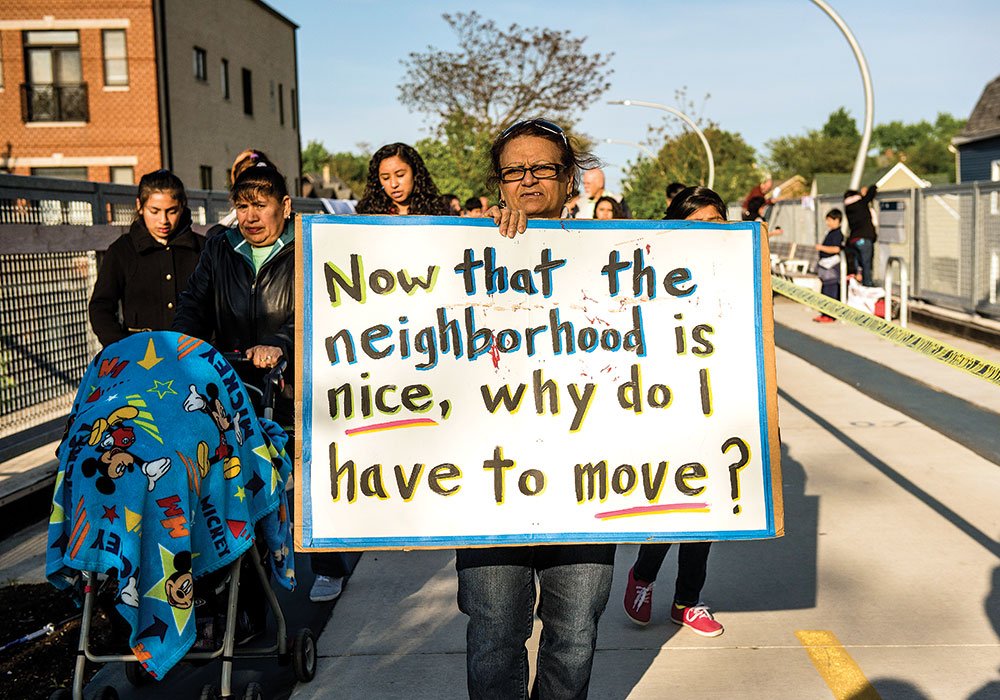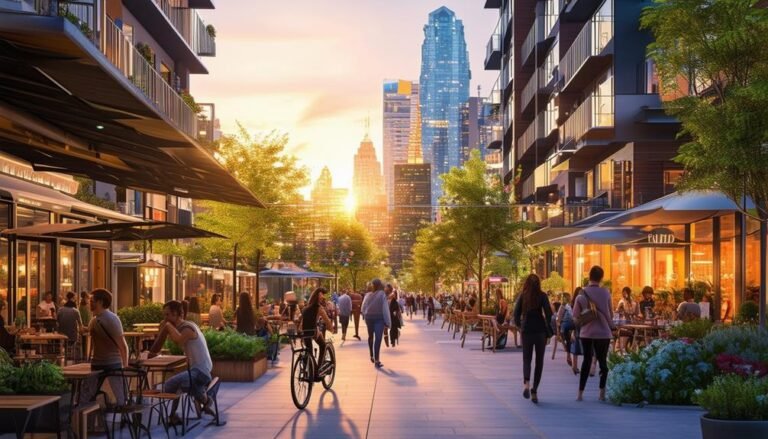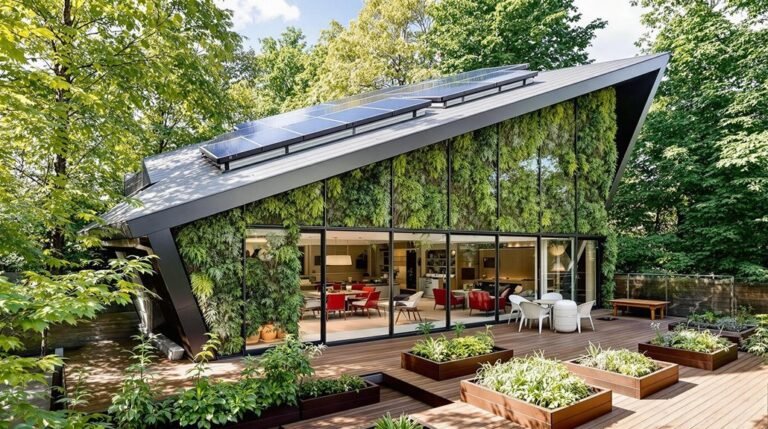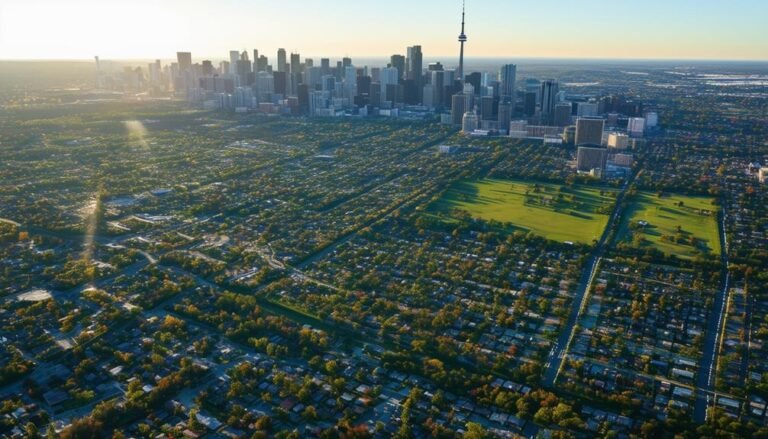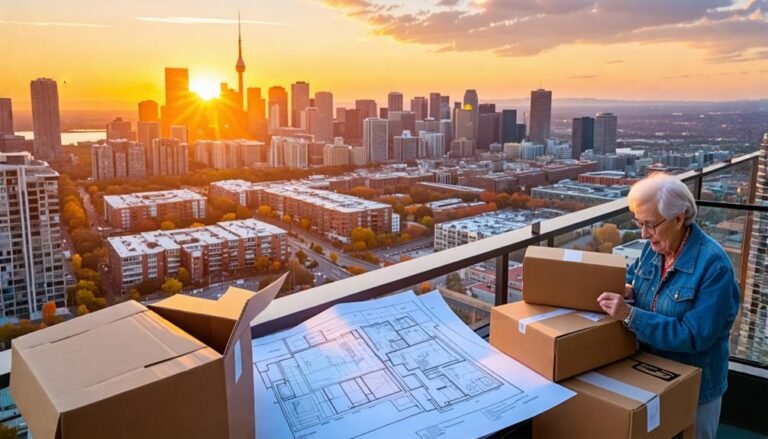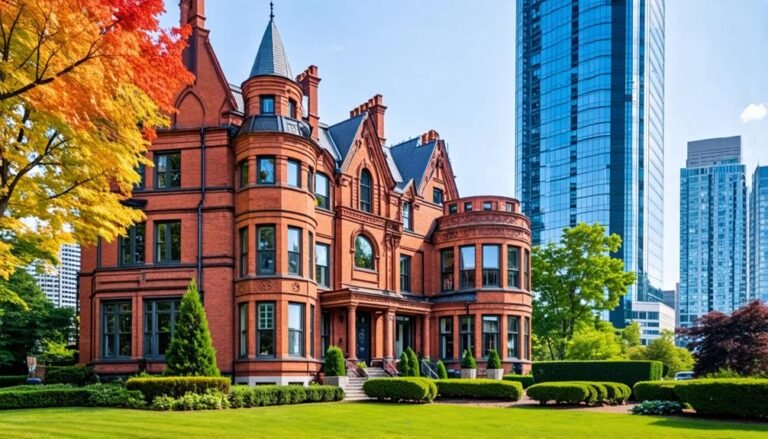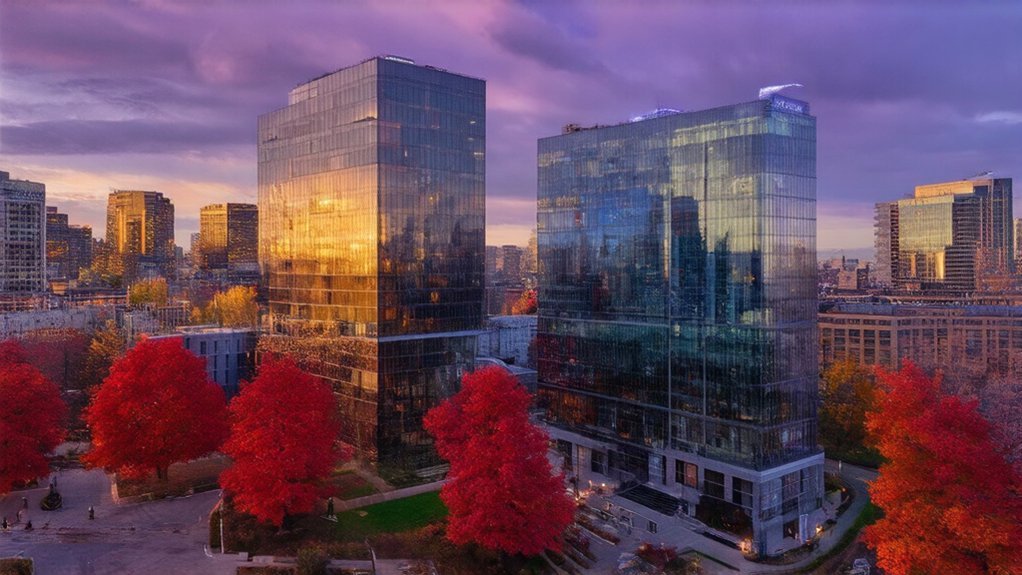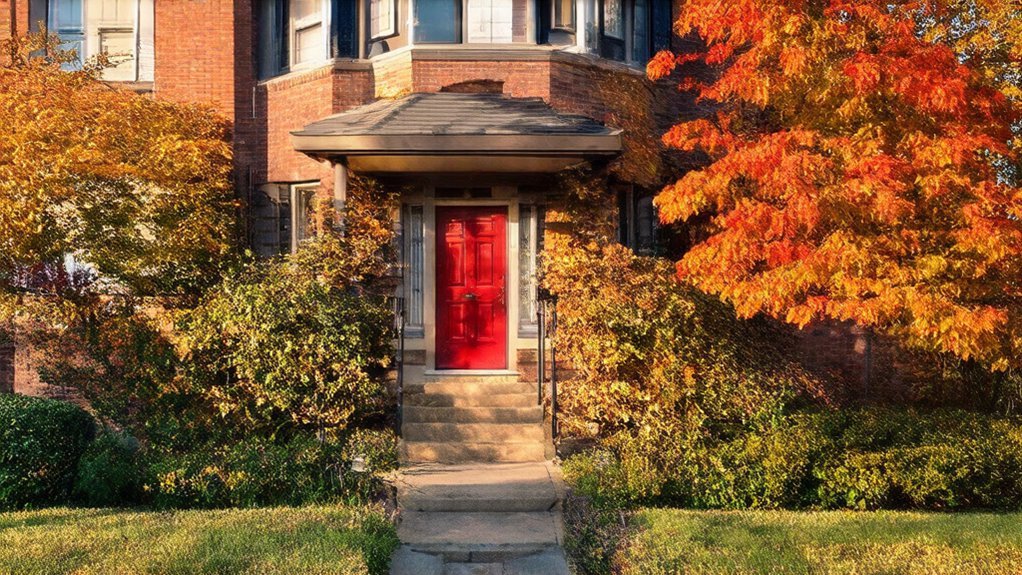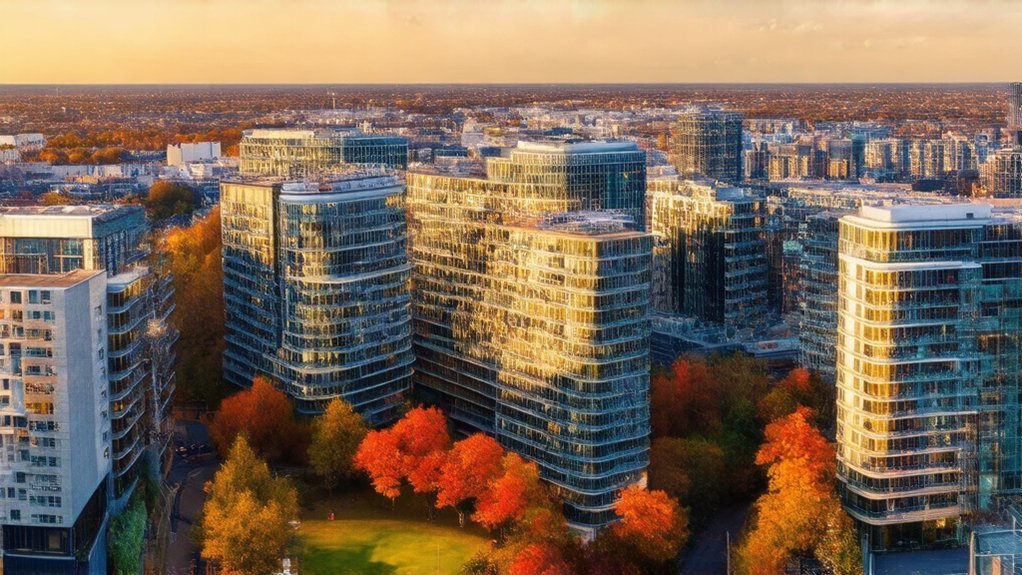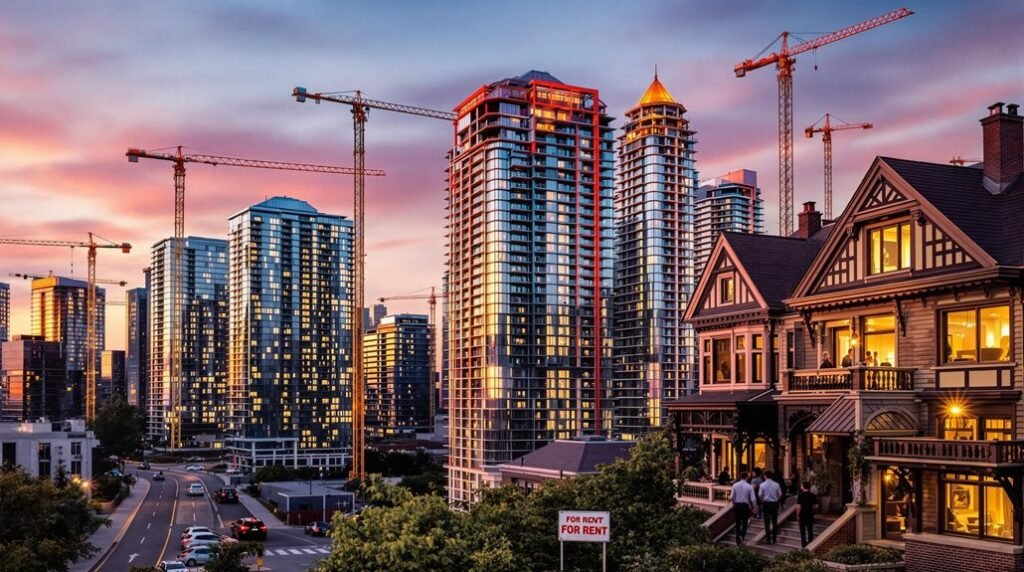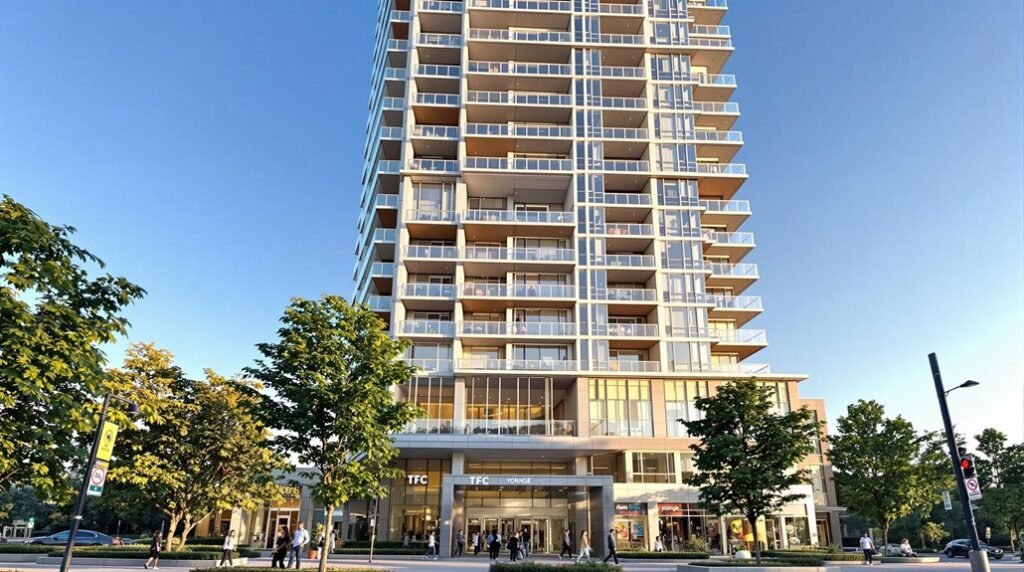As the city’s skyline reaches ever higher, Toronto’s neighborhoods are undergoing a metamorphosis that’s reshaping their very soul. You’ve likely noticed the changes: trendy cafes replacing corner stores, luxury condos towering over modest homes, and an influx of new faces in once-familiar streets. These are the hallmarks of gentrification, a process that’s both revitalizing and controversial. While some celebrate the urban renewal, others mourn the loss of community character and affordability. The question remains: who truly benefits from this transformation, and at what cost? The answer isn’t simple, but it’s one that affects every Torontonian’s future.
Key Takeaways
- Low interest rates and population growth drive urban transformation in Toronto neighborhoods.
- Gentrification is evident in areas like Downsview, Regent Park, and Gerrard East.
- Rising property values and rent prices lead to displacement of long-time residents.
- New amenities and improved public spaces attract higher-income residents to gentrifying areas.
- Government policies focus on rent control, affordable housing, and community benefits agreements to address challenges.
Understanding Toronto’s Gentrification Process
Toronto’s gentrification is a complex urban evolution, fueled by a perfect storm of economic factors and population shifts that reshape neighborhoods over decades. You’ll find that low interest rates and rapid population growth are driving this transformation, pushing property values upward and altering the city’s landscape.
Take Leslieville as an example. This neighborhood’s 30-year journey from working-class to upscale illustrates the gradual nature of gentrification. It’s not an overnight change, but a slow progression that can sometimes fly under the radar until you suddenly realize your favorite local diner has been replaced by a trendy bistro.
Currently, you’ll notice gentrification taking hold in areas like Downsview, Regent Park, and Gerrard East. These neighborhoods are experiencing rising incomes and demographic shifts, signaling the start of a transformation that could span decades.
As gentrification unfolds, you’ll see improvements in public amenities and an influx of upscale shops and restaurants. However, it’s vital to recognize the downsides: long-time residents may face displacement, and rent prices often skyrocket.
Urban planning plays a significant role in this process. Factors like proximity to the city center, infrastructure investments, cultural vibrancy, and historical significance all contribute to a neighborhood’s gentrification potential. Effective urban planning strategies can help mitigate some of the negative impacts, but they require careful consideration and community engagement.
To truly understand Toronto’s gentrification, you need to look beyond surface-level changes and consider the long-term implications for the city’s diverse communities. It’s a delicate balance between progress and preservation, and one that continues to challenge urban planners and policymakers alike.
Key Neighborhoods Undergoing Transformation
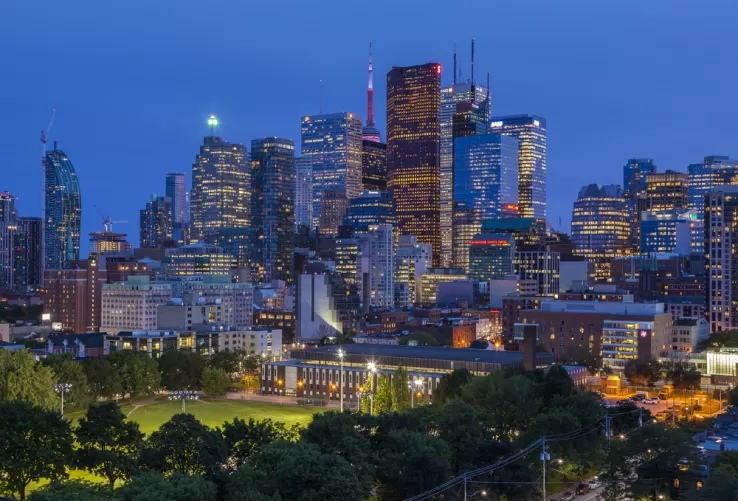
While gentrification’s impact is felt across Toronto, you’ll find its effects most pronounced in several key neighborhoods that are currently in the midst of significant transformation. Downsview, Regent Park, Birch Cliff, Gerrard East, and Rockcliffe-Smythe are at the forefront of this change, each experiencing unique developments that are reshaping their landscapes and communities.
In Regent Park, you’ll witness ongoing development projects and city investments driving the gentrification process. This area’s transformation highlights the importance of community engagement and cultural preservation as longtime residents adapt to the evolving neighborhood dynamics.
Birch Cliff, on the other hand, offers a glimpse into how gentrification can create family-friendly environments while maintaining competitive housing prices, particularly in the condo market.
As you explore Gerrard East, you’ll notice the influx of new coffee shops and restaurants, attracting a diverse mix of residents and changing the area’s character. This transformation underscores the need for balanced development that respects the neighborhood’s existing culture while embracing positive change.
In Rockcliffe-Smythe, you’ll see how infrastructure upgrades and public amenities play a pivotal role in gentrification. The Stockyards Open Mall and York Community Centre are prime examples of developments that are reshaping the neighborhood’s landscape and attracting new residents.
As these neighborhoods continue to evolve, it’s essential to take into account the impact on existing communities and strive for inclusive development practices. By prioritizing community engagement and cultural preservation alongside infrastructure improvements, Toronto can work towards a more equitable gentrification process that benefits both new and longtime residents.
Economic Drivers of Urban Change
You’ll find that several key economic factors are driving the rapid urban transformation in Toronto’s neighborhoods. Low interest rates have made borrowing more accessible, fueling capital investment in real estate. This influx of capital, coupled with the city’s rapid population growth, has led to a surge in property values across various areas.
The impact of these economic drivers is evident in the dramatic income shifts observed in gentrified neighborhoods. Data from Environics reveals a staggering 53% increase in incomes within these areas, highlighting the significant demographic shifts taking place. As higher-income residents move in, they bring increased spending power, further stimulating local economies and attracting new businesses.
Proximity to Toronto’s city center plays a pivotal role in determining which neighborhoods are prime for gentrification. Areas with easy access to downtown amenities and job opportunities become increasingly attractive to young professionals and families. Additionally, strategic infrastructure investments by the city can catalyze urban change, improving transportation links and public spaces.
The process of gentrification isn’t instantaneous. Take Leslieville, for example, which underwent a gradual transformation from a working-class neighborhood to an upscale district over nearly three decades. This slower pace allows for organic community development and adaptation.
Currently, neighborhoods like Downsview, Regent Park, Birch Cliff, Gerrard East, and Rockcliffe-Smythe are experiencing the effects of these economic drivers. As capital continues to flow into these areas, you can expect to see further changes in their demographic makeup, local businesses, and overall character in the coming years.
Social Impacts on Local Communities
Beyond the economic forces driving urban change, gentrification‘s social impacts on local communities in Toronto are profound and far-reaching. You’ll notice that as property values and rent prices rise, long-time residents are often forced to relocate. This displacement disrupts the fabric of established neighborhoods, altering the social dynamics that have developed over years.
As higher-income residents move in, you’ll observe changes in the community’s character. Social tensions can emerge between new and existing residents, challenging the sense of community cohesion that once defined these areas. You might see a shift in the types of businesses and services available, catering to the preferences of newcomers rather than long-standing community members.
You’ll find that gentrification can impact access to social services, potentially leaving vulnerable populations without the support systems they’ve relied on. This change in demographics can lead to a loss of cultural identity and social networks that have been essential to the well-being of local communities.
In response to these challenges, you’ll witness resistance from existing residents. They’re advocating for affordable housing initiatives and rent control regulations to preserve their communities. You’ll also see efforts to implement inclusive urban planning strategies and community benefits agreements, aimed at mitigating the negative social impacts of gentrification.
As you navigate Toronto’s changing neighborhoods, you’ll encounter a complex landscape where the benefits of urban renewal often come at the cost of community disruption. The city faces the ongoing challenge of balancing progress with the preservation of its diverse and vibrant local communities.
Housing Market Shifts and Challenges
Toronto’s housing market has undergone dramatic shifts due to gentrification, creating a complex landscape of challenges for residents across the socioeconomic spectrum. You’ll find that property values in gentrified neighborhoods have skyrocketed, with incomes in these areas increasing by a staggering 53%. This surge has attracted higher-income residents, bringing upscale amenities and improved public spaces. However, these changes come at a cost, particularly for long-time residents who now face significant displacement risks.
This pressure has led to a reduced availability of affordable housing options, forcing many to seek alternatives in less desirable areas or face potential homelessness.
You’ll also observe that the housing market has become a hotbed for speculation, further exacerbating the challenges faced by those seeking affordable housing. This trend has put additional strain on low-income residents, who find themselves competing for a shrinking pool of reasonably priced homes.
As you navigate this changing landscape, you’ll notice that rent affordability has become a pressing issue. The influx of wealthier residents has driven up rent prices, making it increasingly difficult for lower-income individuals and families to remain in their homes.
As you explore these gentrified neighborhoods, you’ll encounter a mix of emotions and experiences. While some celebrate the area’s revitalization, others grapple with the fear of displacement and the loss of their community. This tension has sparked resistance movements, with existing residents advocating for affordable housing initiatives and rent control regulations to preserve their place in the evolving cityscape.
Government Policies and Interventions
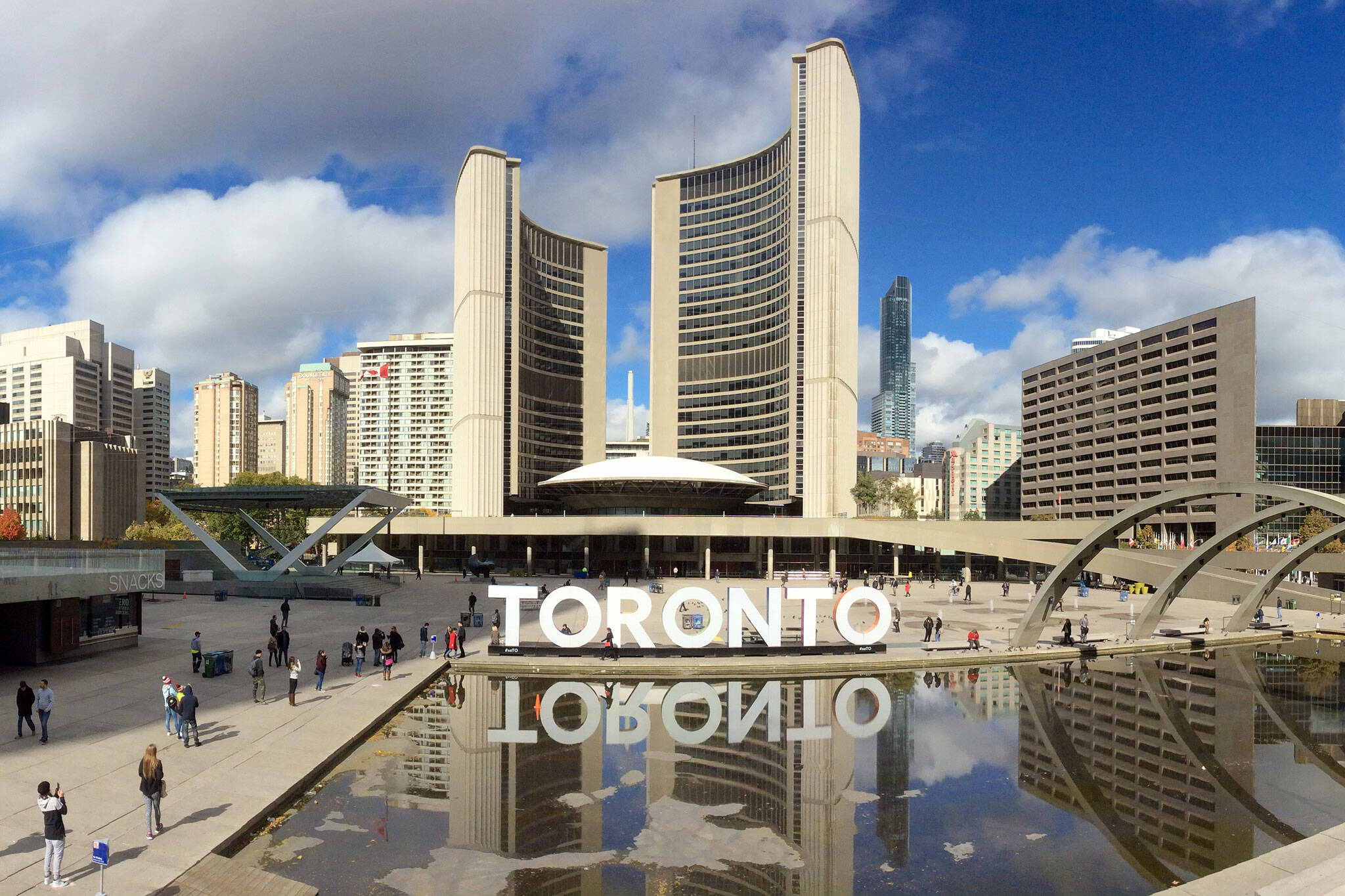
In response to the housing market challenges posed by gentrification, the City of Toronto has implemented a range of policies and interventions aimed at preserving affordability and community stability. You’ll find that these measures are designed to address the complex issues arising from urban transformation while balancing economic growth with social fairness.
One of the key strategies you’ll encounter is rent control regulations. These policies aim to protect low-income residents from sudden rent increases, reducing the risk of displacement. Alongside this, you’ll see affordable housing initiatives being rolled out across the city, creating opportunities for those who might otherwise be priced out of gentrifying neighborhoods.
You’ll notice that community benefits agreements have become an integral part of new developments. These guarantee that incoming projects contribute positively to the local area, fostering a sense of shared prosperity. The city’s focus on inclusive urban planning further demonstrates its dedication to equity considerations in the face of rapid change.
As you explore Toronto’s evolving neighborhoods, you’ll observe efforts to preserve cultural heritage. This emphasis on maintaining local identity is essential for long-term sustainability and community engagement. By safeguarding the unique character of each area, the city aims to create a more balanced approach to urban development.
While the policy effectiveness of these interventions is still being evaluated, you’ll find that Toronto’s multifaceted approach reflects a growing awareness of the need for all-encompassing strategies to address gentrification’s impacts. The city’s ongoing efforts underscore the challenges of maintaining affordability and community cohesion in a rapidly changing urban landscape.
Future Outlook for Toronto’s Neighborhoods
You’ll find that Toronto’s neighborhoods are positioned for significant changes in the coming years, driven by ongoing gentrification trends and the city’s response to them. As development projects and city investments continue to shape the urban landscape, you’ll observe the spread of gentrification to more areas, potentially altering the city’s identity in profound ways.
To address the challenges posed by these changes, you’ll see an increased focus on community engagement and cultural preservation. Advocacy groups and residents will push for inclusive development policies that maintain the unique character of each neighborhood while accommodating growth. You’ll observe efforts to balance economic progress with the preservation of cultural heritage, as Toronto aims to retain its diverse identity.
Government interventions will play a pivotal role in shaping the future of Toronto’s neighborhoods. You can expect policies aimed at addressing housing affordability and mitigating economic disparities that often accompany gentrification. These measures will be vital in maintaining social equity as the city evolves.
As you navigate Toronto’s changing landscape, you’ll notice shifts in neighborhood dynamics reflecting the city’s changing demographics and preferences. Some areas may become more upscale, while others might retain their traditional character. You’ll witness a delicate balancing act between embracing progress and preserving the city’s cultural mosaic.
The future outlook for Toronto’s neighborhoods is one of transformation and adaptation. You’ll be part of a city grappling with the challenges and opportunities presented by gentrification, as it aims to create a more inclusive and sustainable urban environment for all residents.
Conclusion
You’ve seen how gentrification‘s changing Toronto’s face. It’s a double-edged sword, bringing new life to neighborhoods while pushing out long-time residents.
As you navigate this urban landscape, remember that change is inevitable, but it’s how we manage it that counts. With smart policies and community involvement, Toronto can strike a balance between progress and preservation.
The writing’s on the wall: the city’s future depends on inclusive, sustainable development.


